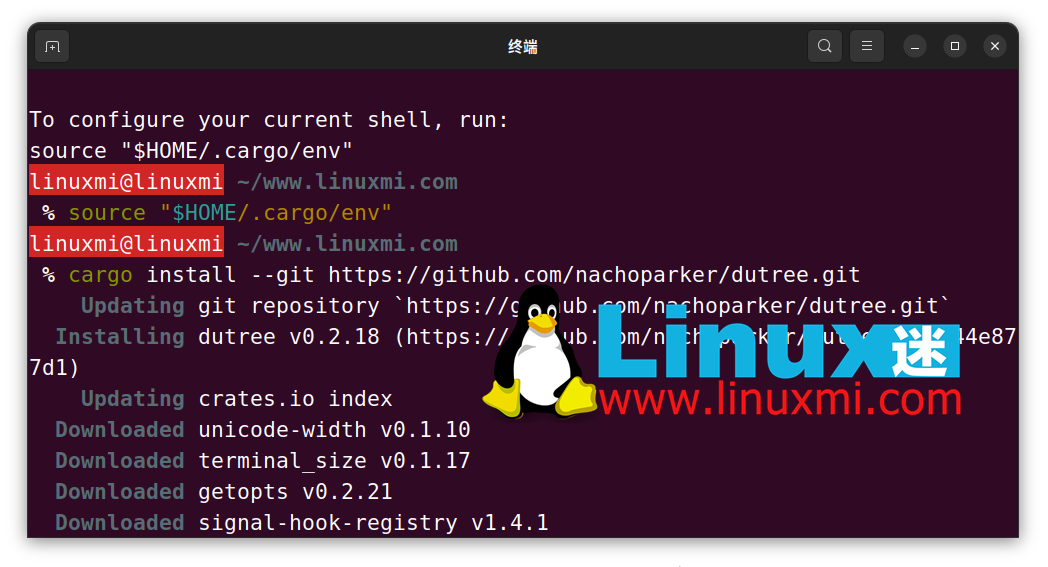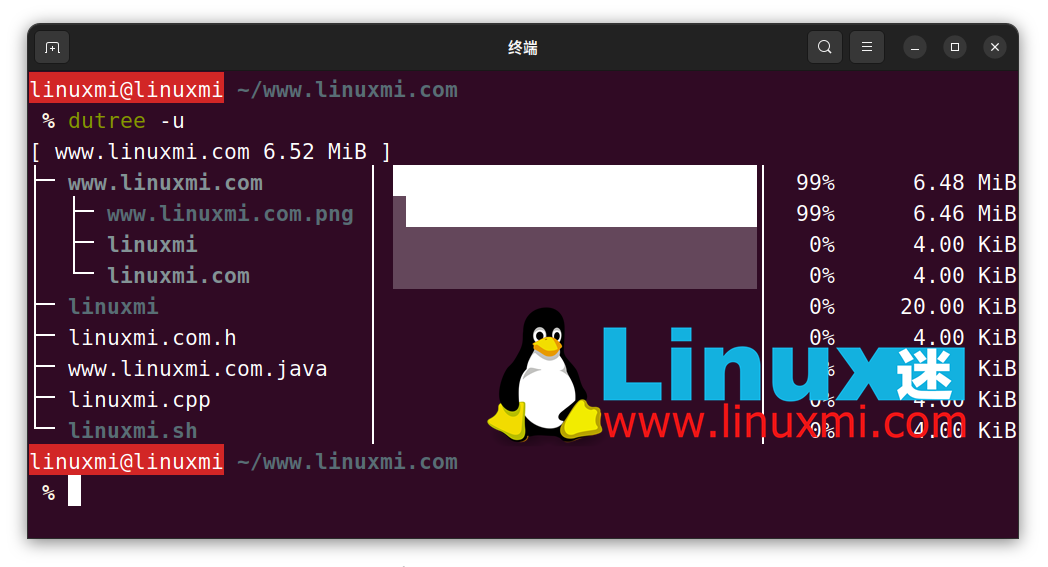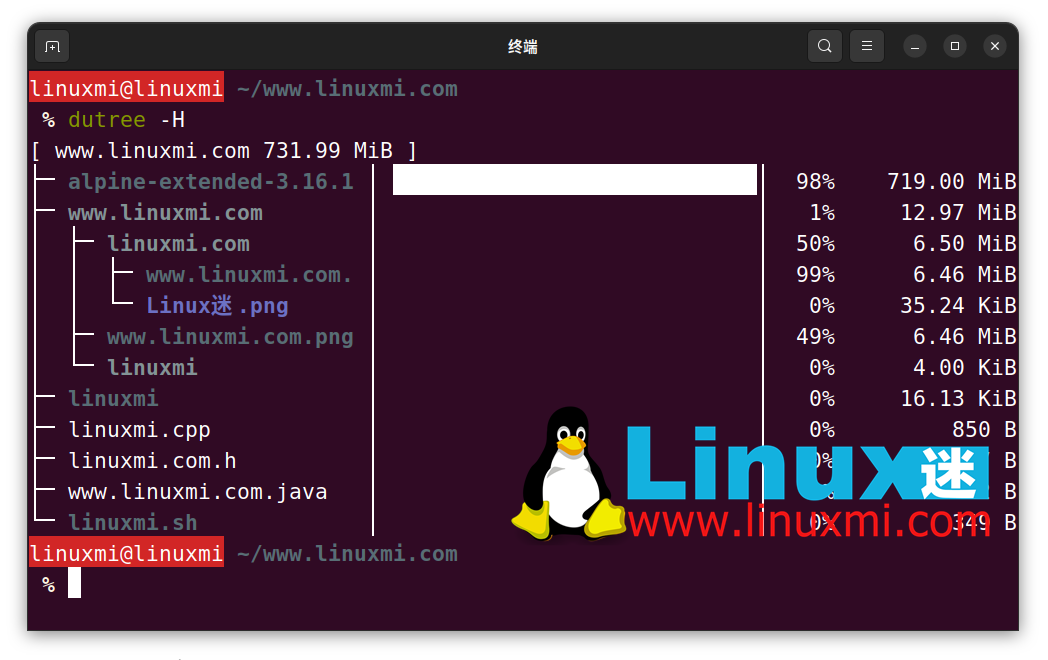
dutree is a fast, open source command line tool for analyzing disk usage. It is written in the Rust programming language and combines the functionality of the durep (disk usage reporting tool) and tree (listing directory contents in a tree format) command line tools. Therefore, dutree is able to report disk usage in a tree format.
As a powerful disk usage tracking tool, dutree is suitable for Linux file systems. It is free and open source and is able to display results in the form of colored output, with the color depending on the configuration of the GNU LS_COLORS environment variable. This environment variable allows setting the color of files based on their extension, permissions, and type.
dutree has the following characteristics:
To install dutree in a Linux system, first ensure that the Rust programming language is installed on the system. If Rust is not installed yet, you can install it using the following curl command:
linuxmi@linuxmi ~/www.linuxmi.com % sudo curl https://sh.rustup.rs -sSf | sh

After installing Rust, you can execute the following command to install dutree in the Linux distribution, as shown below:
linuxmi@linuxmi ~/www.linuxmi.com % cargo install --git https://github.com/nachoparker/dutree.git

After dutree is installed, it will use environment colors based on the environment variable LS_COLORS, with the same colors as the ls –color command configured for our distribution.
linuxmi@linuxmi ~/www.linuxmi.com % ls --color
The easiest way to run dutree is without any parameters, so that it displays a file system tree.
linuxmi@linuxmi ~/www.linuxmi.com % dutree

To display actual disk usage instead of file size, use the -u flag.
linuxmi@linuxmi ~/www.linuxmi.com % dutree -u

You can use the -d flag to display directories at a given depth (default is 1). The following command will display the directories at depth 3 under the current working directory.
For example, if the current working directory (~/) displays the size of ~///*, as shown in the following example screenshot.
linuxmi@linuxmi ~/www.linuxmi.com % dutree -d 3

Exclude files or directories from output
To exclude items matching file or directory names, use the -x flag.
linuxmi@linuxmi ~/www.linuxmi.com % dutree -x alpine-extended-3.16.1-x86_64.iso

You can also quickly get a local overview by skipping directories by using the -f option as shown below.
linuxmi@linuxmi ~/www.linuxmi.com % dutree -f

A complete summary/overview can be generated using the -s flag as shown below.
linuxmi@linuxmi ~/www.linuxmi.com % dutree -s

Files smaller than a certain size can be aggregated. The default value is 1M, as shown below.
linuxmi@linuxmi ~/www.linuxmi.com % dutree -a

The switch to exclude hidden files is -H.
linuxmi@linuxmi ~/www.linuxmi.com % dutree -H

This option is used to display the size in bytes instead of kilobytes (the default). -b
linuxmi@linuxmi ~/www.linuxmi.com % dutree -b

To turn off colors and display only ASCII characters, use the flag -A as shown below.
linuxmi@linuxmi ~/www.linuxmi.com % dutree -A

You can use the -h option to view dutree help messages.
$ dutree -h
使用方式: dutree [选项] [..]
选项:
-d, –depth [DEPTH] 显示目录深度为 N (默认 1)
-a, –aggr [N[KMG]] 聚合小于 N B/KiB/MiB/GiB 的文件(默认 1M)
-s, –summary 等效于 -da,或 -d1 -a1M
-u, –usage 报告实际磁盘使用情况而不是文件大小
-b, –bytes 以字节打印大小
-x, –exclude NAME 排除匹配的文件或目录
-H, –no-hidden 排除隐藏文件
-A, –ascii 仅使用 ASCII 字符,不使用颜色
-h, –help 显示帮助
-v, –version 打印版本号
dutree 是一个简单而强大的命令行工具,用于在 Linux 系统上以树状格式显示文件大小和分析磁盘使用情况。如果还有什么疑问与建议,请在下面的评论栏中留言告诉我们。
The above is the detailed content of dutree: A powerful Linux file system disk usage tracking tool. For more information, please follow other related articles on the PHP Chinese website!




